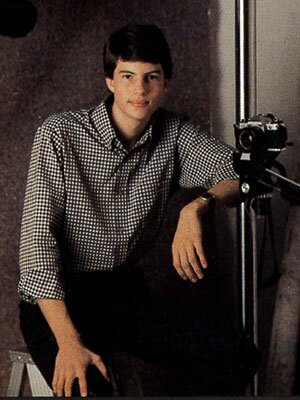
Paul Debevec, a member of the graduating class of 1988, is a renowned computer graphics researcher. During his time at Uni, he was a part of several theatre productions including The Phantom Tollbooth, The Lottery, and Big Show ‘87 and ‘88. Debevec was also the photo editor for the Gargoyle and Yearbook during his senior year following a photography apprenticeship he completed over his junior year.
Following his time at Uni, Debevec earned a degree in Math and Computer Engineering at the University of Michigan. Then, he completed his PhD in Computer Science at the University of California, Berkeley where he did research on image-based modeling and rendering, which was inspired from his time at Uni when he developed black and white film as a photo editor. Debevec then brought his talents to the University of Southern California where he became a research professor in the Vision and Graphics Laboratory.
Over his career, Debevec has earned many honors including the Scientific and Engineering Academy Award in 2010 which he received for his research developing Light Stage, a device that simulates all possible lighting angles of an actor/actress. This technology was used in several blockbuster movies including Spider-Man 2, King Kong, and Superman Returns. Debevec also worked alongside the Smithsonian Institution to create a scan of a 3D model of Barack Obama at The White House. Along with his research position at USC, Debevec also worked as a staff engineer for Google VR before accepting a position at Netflix where he’s currently the Director of Research, Creative Algorithms, and Technology.
In 2022, Debevec was awarded the 2022 Charles F. Jenkins Lifetime Achievement Award for his groundbreaking work in high dynamic range imaging, image-based lighting and photogrammetry, essential techniques used in computer graphics for VFX and Virtual Production. Debevec's pioneering work makes it possible to record and reproduce the light of real scenes to illuminate virtual scenes and vice versa. High dynamic range imagery is a mainstay of computer graphics and combined with image-based lighting, has enabled realistic integration of existing live-action lighting in computer-rendered images. These tools and concepts are now a standard within the VFX industry for rendering. The concepts and the innovative use of LED lighting Paul pioneered with the Light Stage have further laid the groundwork for the use of LED lighting in virtual production, which has seen a rapid growth as a tool for lighting actors on virtual stages.
Sources:
Spangler, Todd. "Netflix Taps Google, USC Researcher Paul Debevec to Lead VFX, Graphics R&D." Variety
"Bio." Paul Debevec
